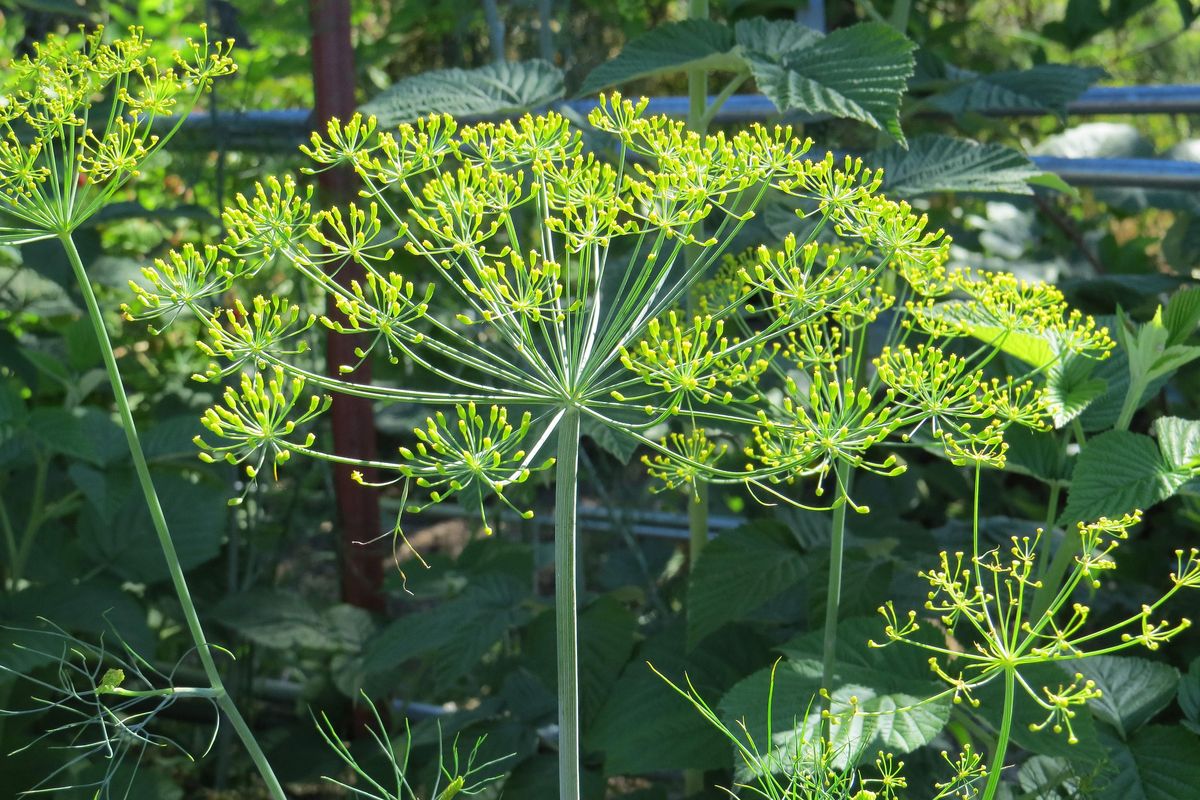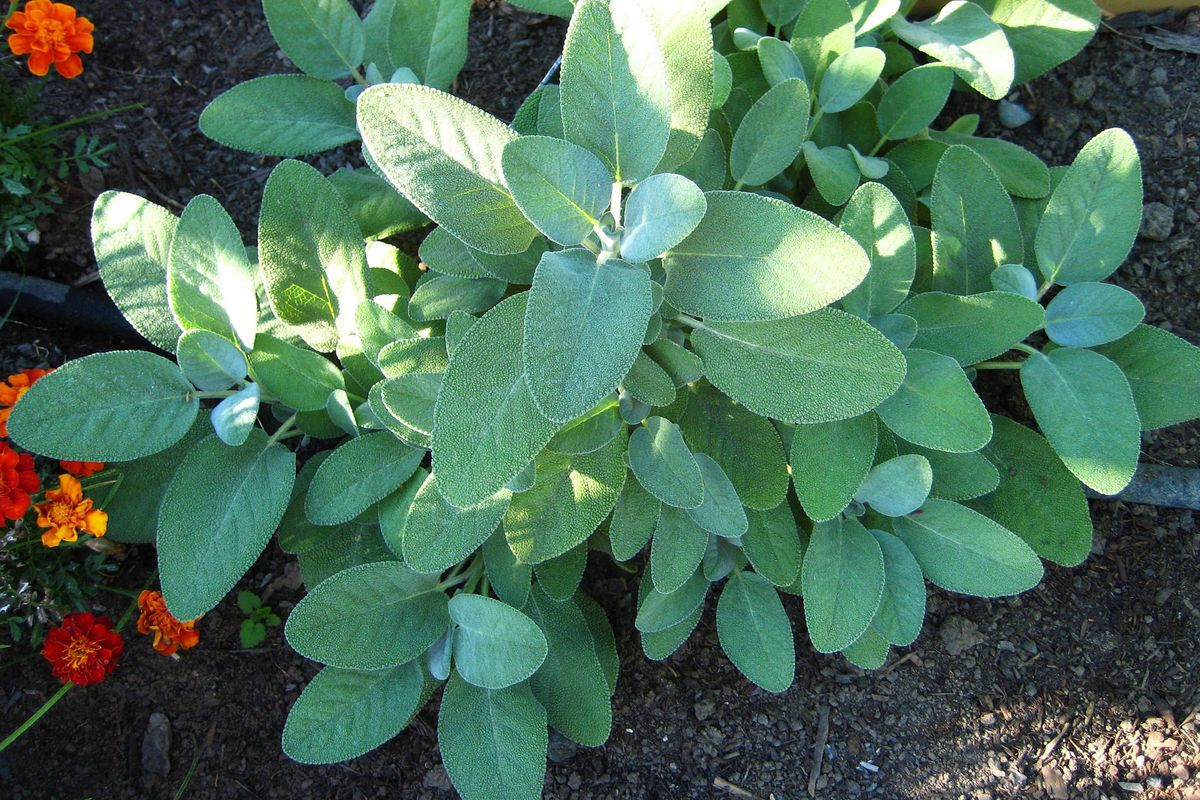In the Garden: Spice up your garden with culinary herbs
Dill flowers attract many types of pollinators and produce tasty seeds. (Susan Mulvihill / The Spokesman-Review)
Culinary herbs are the easiest edible plants you can grow. With no known insect or disease problems, they are a breeze to grow. Herbs add such a flavorful dimension to all kinds of dishes. If you plant them right outside your door, they’ll become an integral part of your cooking.
The following herbs grow beautifully in the Inland Northwest. Some will come back year after year while others must be planted annually:
Basil (Ocimum bacilicum): This annual herb is delicious on pizzas and in homemade pesto. Basil doesn’t like chilly conditions, so wait until late May to sow the seeds. Plant them 1/4-inch deep and thin seedlings 8 inches apart. Any time the plants develop flower buds, pinch them off so they will continue to grow leaves.
Chives (Allium schoenoprasum): A perennial herb, chives have multiple onion-like leaves and attractive pink blossoms that are a huge hit with pollinators. Sow seeds directly in the garden, or purchase a seedling or two from a garden center. Wait 60 days before harvesting from plants sown from seed or 30 days after transplanting a nursery-grown seedling in your garden. Space plants 8 inches apart in the garden.
Cilantro (Coriandrum sativum): This annual herb is most commonly used in tomato salsas and Asian-inspired dishes. The foliage of this plant is referred to as cilantro, and the seeds (which are edible) are called coriander. Since seedlings don’t transplant well, sow seeds directly in your garden. If you plan to add cilantro to your homemade salsa, plant seeds about 50 days before you expect ripe tomatoes. That way, the cilantro leaves will be at their peak at the same time. Keep plants well-watered throughout the season to avoid stressing them, which causes them to bolt to seed prematurely.
Dill (Anethum graveolens): Dill is an easy-to-grow annual herb that also attracts pollinators. You will likely only need a few plants. Direct-sow seeds 1/4-inch deep about 2 inches apart with an eventual spacing of 6 inches. Keep the plants well-watered. Snip leaves as needed and, after the plants bloom, dry the seeds to use as seasoning and for next year’s garden.
Mint (Mentha): While fresh mint is tasty, be aware that members of the mint family have the potential to take over your garden. Confine them to a container, and they’ll behave themselves. Mint is a perennial herb. If you are interested in growing a few types, a single plant of each should meet your needs.
Oregano (Origanum vulgare): Also a member of the mint family, oregano is a perennial herb that will spread throughout your garden, so plant it in a container. Space plants about 10 inches apart.
Parsley (Petroselinum crispum): Parsley is a biennial, which means it has a two-year lifespan. The first year, it establishes a root system and produces foliage; the next year, it continues to grow, then blooms, sets seed and dies. Most gardeners purchase seedlings instead of starting them from seed. Harvest outer sprigs of parsley as needed so the plant will continue to grow.
Rosemary (Rosmarinus officinalis): Rosemary won’t survive our winters but is well worth growing. You should only need a single plant of this highly aromatic herb. In early fall, transplant your rosemary into a container and bring it indoors before the temperatures really start to drop. Another simpler option is to take cuttings from the plant, put them in water indoors and let them take root. Once the cuttings have a nice root system, transplant them into containers filled with potting soil and keep them under lights or on a sunny windowsill. In the spring after the danger of frost has passed, plant them in the garden.
Sage (Salvia officinalis): A perennial herb, sage is often used for seasoning poultry, winter squash, soup, ravioli and casseroles. One plant will likely suffice, so consider picking up one from a garden center.
Tarragon (Artemisia dracunculus): Tarragon is a perennial herb that grows in zones 4 to 9. A single plant should provide you with enough to meet your needs. The leaves have an interesting licorice flavor and are primarily used for savory dishes. The plants reach about 3 feet in height and cannot be grown from seed so look for starts at garden centers. The plants are deciduous, which means the leaves will drop off during the fall and winter. Trim back the plant in the spring to make room for new foliage to grow.
Thyme (Thymus vulgaris): Another perennial herb, thyme is evergreen, so it will hold onto its leaves in winter. Most herb gardeners find they only require a plant or two for their culinary needs. Let them become established before harvesting sprigs of leaves.
Contact Susan Mulvihill at

